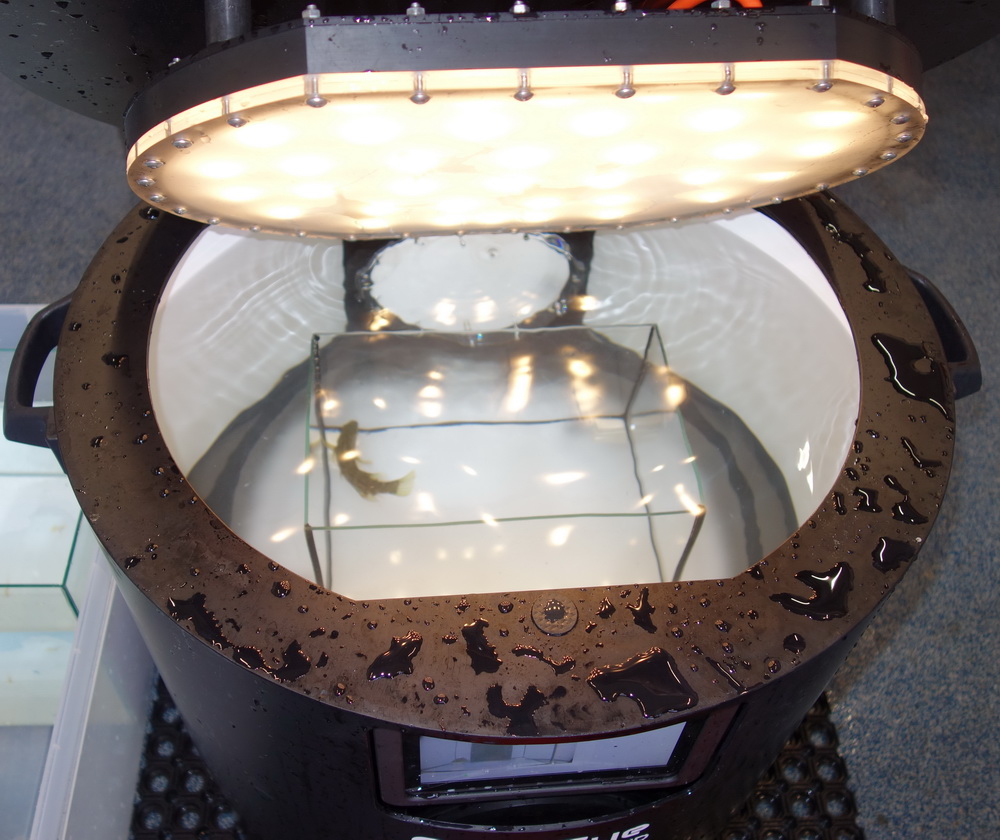9 August 2019 – Kim Halvorsen (working with the QuadEye in the photo above), Torkel Larsen, Tonje Sørdalen, Anne Berit Skiftesvik and other members of our Team are using a new tool – the QuadEye – to support our work on machine vision-learning and artificial intelligence to identify coastal fishes from video and photo surveys, including citizen science.
The QuadEye is a bespoke tool that will be essential in advancing our work on automated species and individual recognition using computer vision.
QuadEye allows us to film live animals in 3-D under standardised conditions using two stereo-video cameras (so four cameras) oriented to take images from different perspectives. The containment chamber is waterproof and has adjustable LED lightning in the top and bottom. It holds 60 L of water.
QuadEye can also be used to make accurate size measurements and to generate 3-D models of organisms, providing high quality data on morphology in addition to length and weight.
The QuadEye is currently being used to gather a labelled image dataset for individual recognition of wrasse, and for building an image library for coastal species to automate and accelerate their identification in both wild and captive settings.
The concept for the QuadEye was conceived by Kim Halvorsen, Tonje Sørdalen and Torkel Larsen, and Submerged AS was contracted to develop and build it.
For more information about the QuadEye, see HERE.
Read a story about the device, and the work, HERE (in Norwegian)



